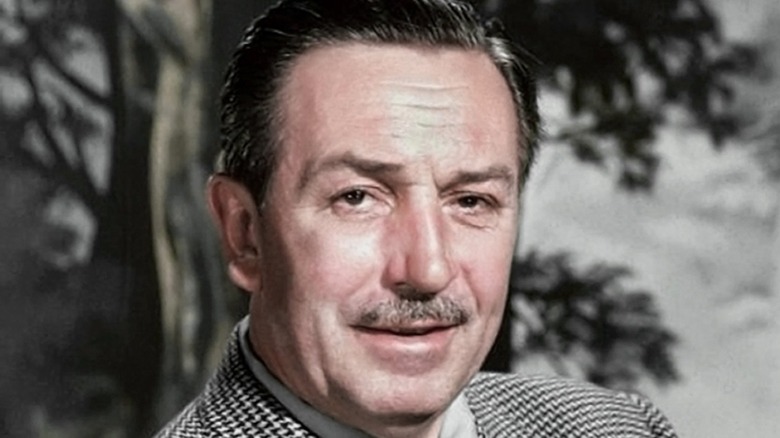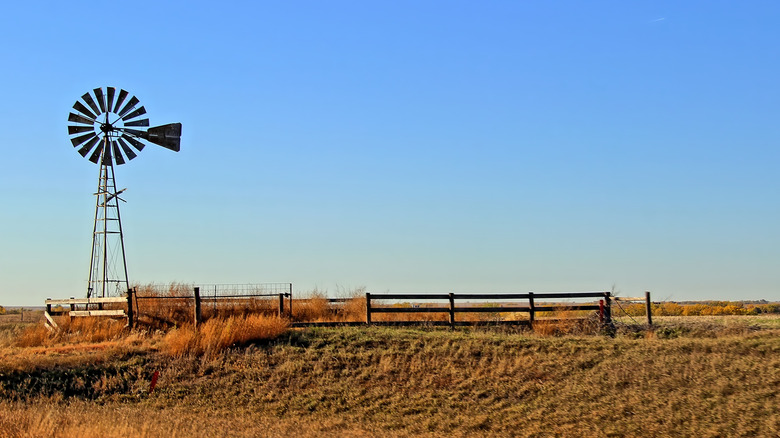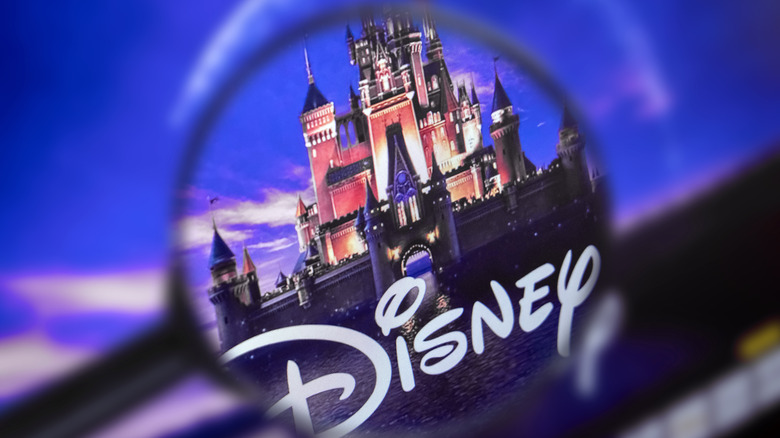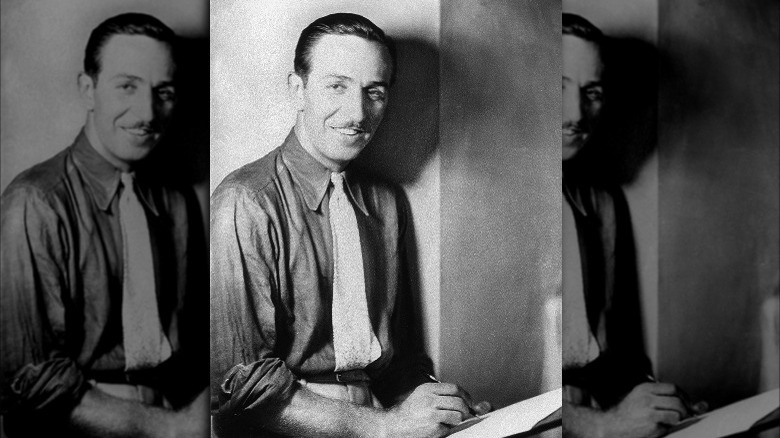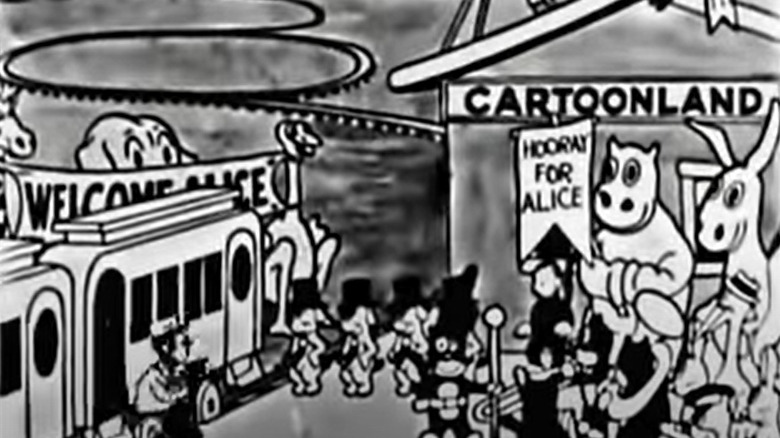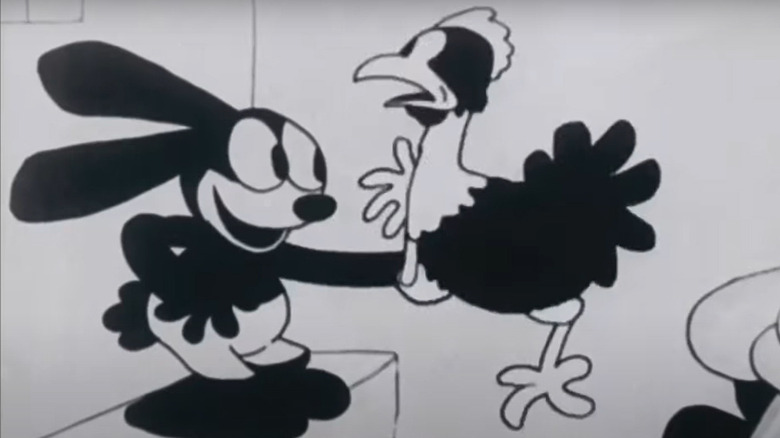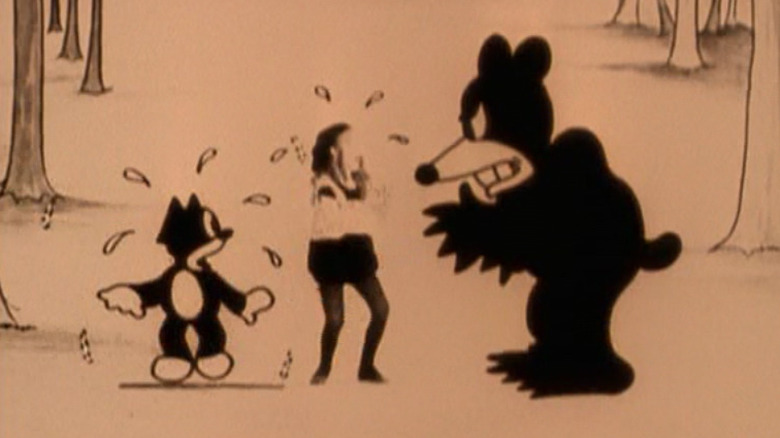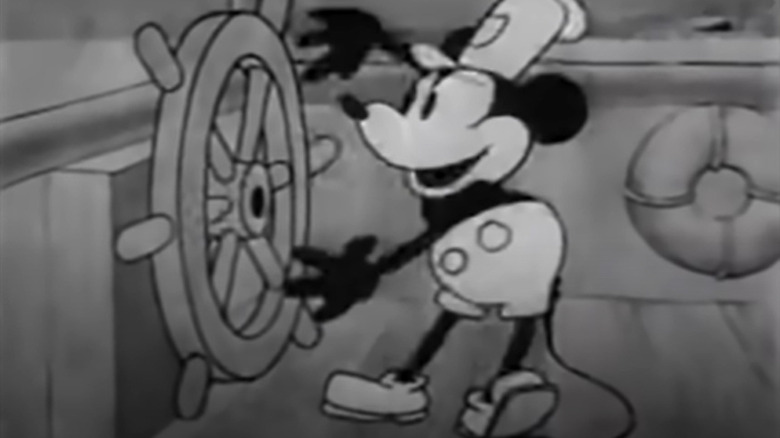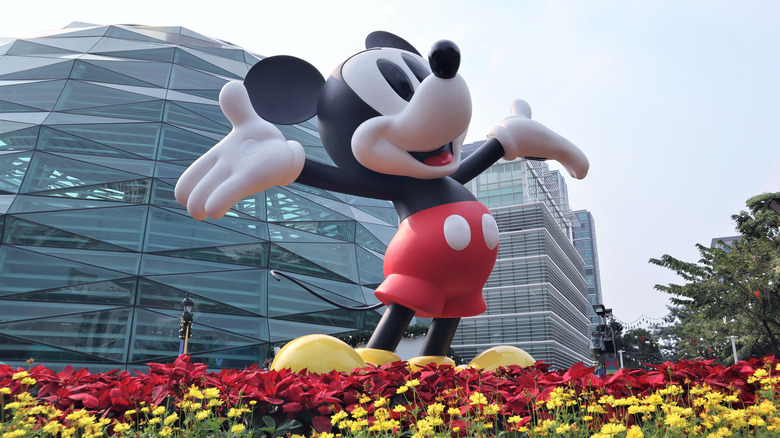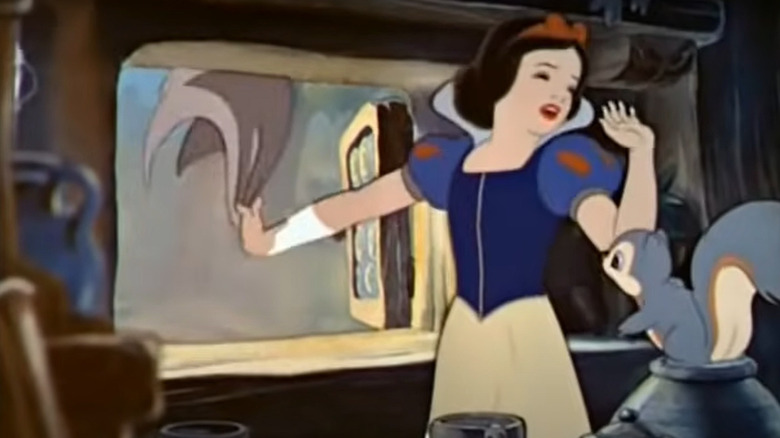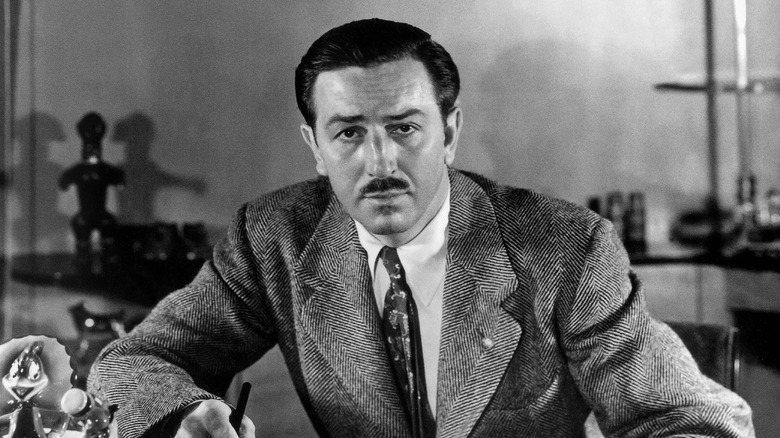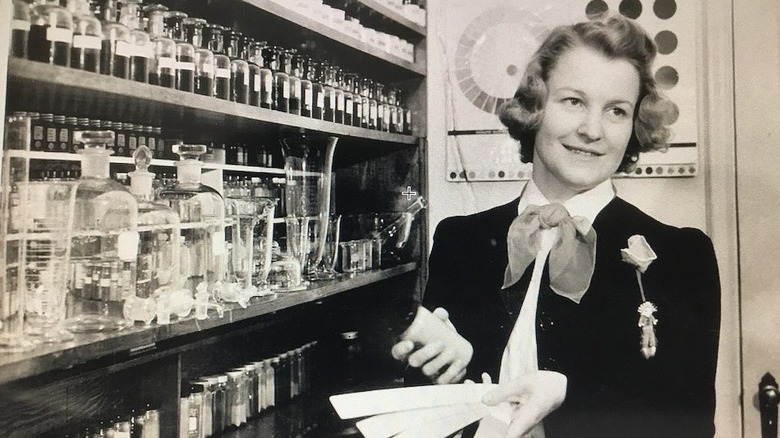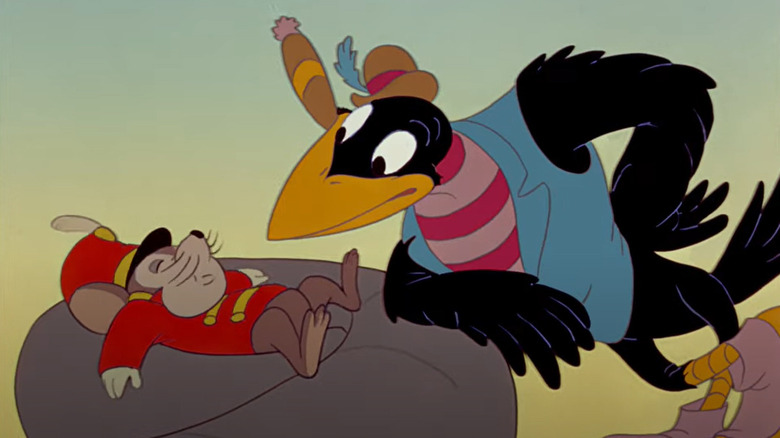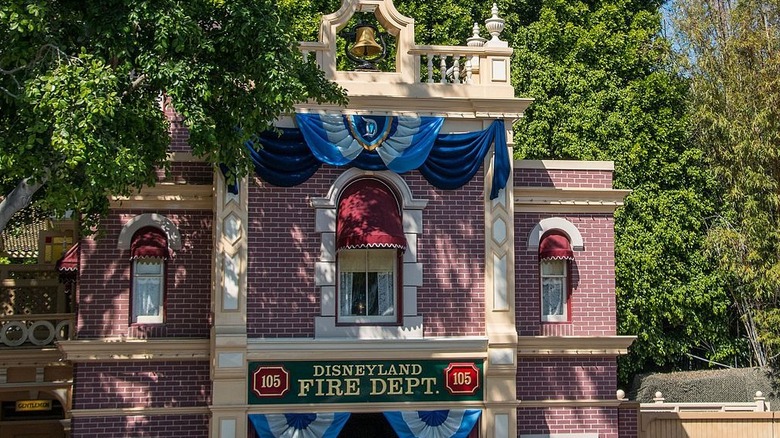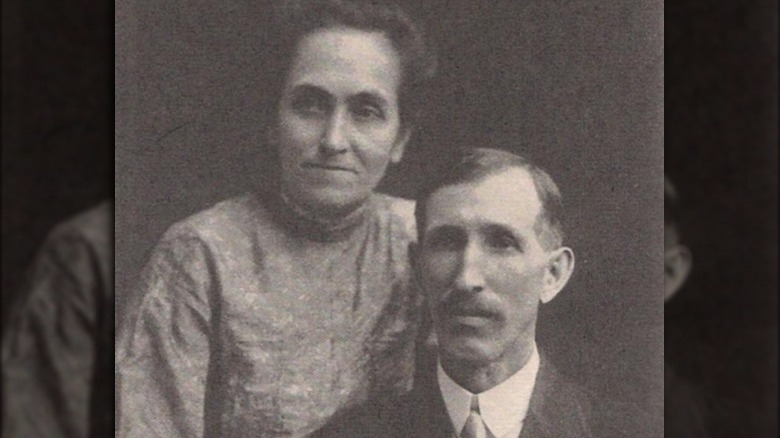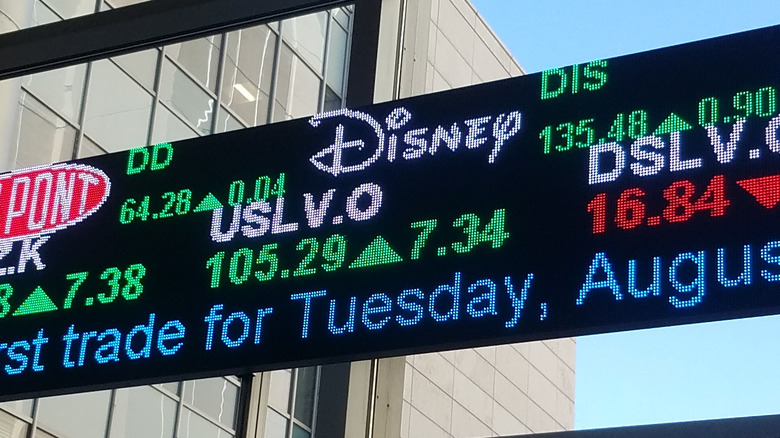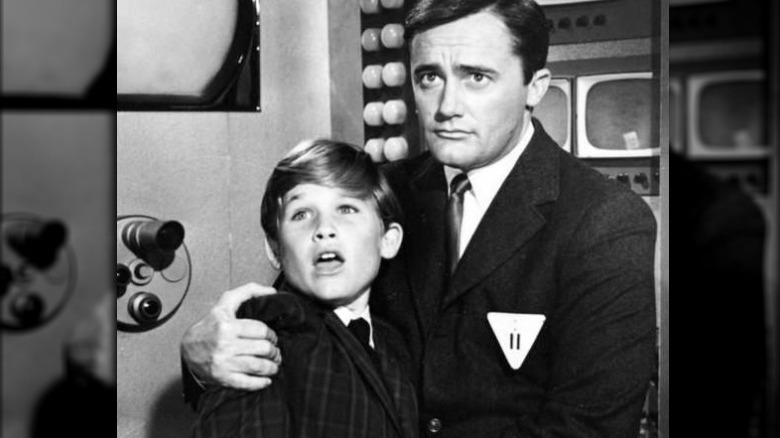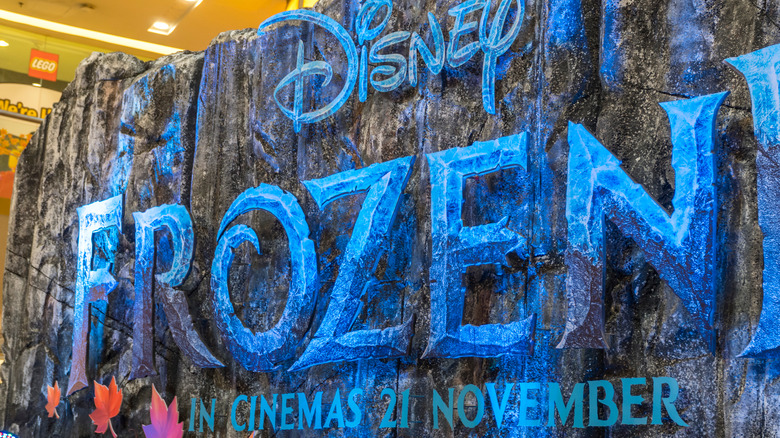Surprising Facts About Walt Disney
There's no doubt that Walt Disney was an icon. What kind of icon, well, that depends on who you ask. Since Disney's death in 1966, he's been remembered as an animation pioneer, theme park inventor, giver-of-happiness, freezer-of-his-own-head, and sexist-slash-racist-slash-antisemite. Not all of these things seem like they would fit together into a single persona, and some of them aren't even true. Still, decades after his death, just about everyone is still trying to figure out who Walt Disney really was.
Some things are pretty obvious. Disney was dedicated to the Walt Disney Studios, the movies he created, and the children he entertained. He was a workaholic — in fact, he worked right up until he was hospitalized just before his death. He was also a devoted family man who had two daughters and 10 grandchildren. He was obsessed with perfection. And he was the king of an animation and theme park empire. You already knew all of that, though. Here are a few things you probably didn't know.
Walt Disney sold his first drawing while living on a farm in Missouri
People who become really famous for one thing often start learning that one thing in childhood. Beethoven started playing piano when he was 5. Picasso was creating oil paintings at the age of 8. And Walt Disney sold his first drawing when he was 7.
According to Mouse Planet, Disney grew up on a farm in Missouri. He loved horses, and one day his neighbor, a retired doctor, offered to pay him a nickel for a drawing of a stallion named Rupert. Apparently, Disney had trouble getting the drawing right because Rupert was busy flirting with a mare on the other side of the fence and wouldn't keep still. "The result was pretty terrible," Disney remembered in an interview, "but both the doctor and his wife praised the drawing highly, to my great delight."
The nickel was the first money Disney ever earned, and his neighbor had the drawing framed and hung up in his living room. After that, one of two things happened (no one knows which). The neighbor kept the drawing and now it's worth a million dollars, or he trashed it and his descendants have forever cursed his inability to see into the future.
His family name wasn't originally Disney
It's true, the name that is now synonymous with mouse ears and princess castles was once French and hard for Americans to pronounce. According to The Walt Disney Family Museum, Disney's ancestral home was in northwestern France in a small village called Isigny. In those days, your last name was often just the place you came from, so when the family moved to the British Isles after the Battle of Hastings (this was a long, long time ago, in 1066) they became known by the name d'Isigny. Eventually, the name morphed into the anglicized Disney.
The Disneys stayed in Lincolnshire for 600 years or so before they moved to Ireland. They settled in the Kilkenny area, then in 1834, Disney's grandfather emigrated to Canada. That's where Walt Disney's father Elias was born. When he was 20, Elias moved to America with his father. Walt was born in Chicago in 1901.
He got his first job as an illustrator at the age of 18
As a teenager and young man, Walt Disney had a few stints in various not-animating jobs, including newspaper delivery boy and candy salesman. He dropped out of high school when he was 17 and during World War I briefly worked as an ambulance driver. Everything changed, though, when he saw an ad for a job at the Kansas City Film Ad Company. The job paid $40 a week. Don't laugh, that's the equivalent of $500 a week in today's money, so, that's more than minimum wage in some parts of the U.S. (though slightly less than minimum wage in others). Not terrible for a high school dropout in the 1920s.
According to the Hollywood Reporter, Disney's job with the Kansas City Film Ad Company was to make very rudimentary animated cartoons, which gave him the foundation for the kind of animating he would later do in his movies. "We didn't draw them like we do today," he told a reporter. "We used to make little cutout things, and joints with pins, we'd put them under the camera and maneuver them and make them do things."
He started his own company at 19
Meanwhile, Walt Disney was doing his own stuff on the side. During his off time, he'd get together with friends and make cartoons, because who doesn't love to also do the thing they do for a living in their free time? According to SilentFilm.org, he wasn't content with just animating stuff and then doing whatever it was you did with your animated stuff when there was no such thing as YouTube. He wanted his cartoons to be seen, so he convinced a local theater owner to show them on the big screen.
Called "Laugh-O-Grams," Disney's creations were a cross between an advertisement and a political cartoon. They were designed to benefit the theater, but they also got a lot of public attention. The shorts gave Disney the support he needed to move on to bigger things: modern retellings of classic fairy tales like "Little Red Riding Hood" and "Goldie Locks and the Three Bears." Unfortunately, Disney was still a kid and not super smart about business (not yet, anyway). He ended up making a bad deal with a film distribution company that never paid him, and within a few years, Laugh-O-Gram was bankrupt.
The Disney icon was almost a rabbit
In 1927, Universal film distributor Charles Mintz asked Walt Disney Studios for help with a new animation series. The star of the cartoon was Oswald the Lucky Rabbit, and in Oswald you can see the genesis of what would become Disney's iconic Mickey Mouse character. According to the BBC, Disney went with a rabbit character at the insistence of Mintz, who thought the market was already too inundated with animated cats. Disney and his partner, Ub Iwerks, went through a couple of rounds of design before settling on a character that was "peppy, alert, saucy, and venturesome."
Then, Mintz was all, "Okay great thanks I'm taking over now." (Note: not an actual historic quote.) Mintz seized all the rights to the Oswald character, which sent Disney back to the literal drawing board. Over the years, the Oswald character hopped around (har har) from artist to artist, but Universal Studios held onto the rights. In 2006, the Walt Disney Company negotiated a swap — they got Oswald, NBC got sports commentator Al Michaels. Um, someone got the way better end of that deal.
Anyway, today Oswald is one of the characters you might encounter while walking around in one of the Disney theme parks. His long absence, though, is the reason why you're wearing mouse ears instead of rabbit ears.
Disney was originally called the "Disney Brothers Studio"
Can you imagine booking a holiday at DisneyBrothersCartoonStudioLand? Watching the latest Disney-Brothers-Cartoon-Studio-Pixar animated film? No? Well it's a good thing that Disney didn't stick with the name he originally chose for his business.
After Laugh-O-Gram went bankrupt in 1923, Disney and his brother Roy decided to get out of Missouri and go where you go if you are actually serious about making it in Hollywood. You know, Hollywood. According to The Walt Disney Family Museum, Disney was disillusioned with making cartoons and tried to get work in the live action film industry, but making it in Hollywood was evidently just as rough in those days as it is today.
The Disneys did land a contract with a New York cartoon distributor to produce a series of cartoons called the "Alice Comedies," which featured a live actor in an animated setting. It wasn't a brand new concept, exactly (film producers had already tried putting cartoons into live action films, just not the other way around). The Disneys made the films under the name "Disney Brothers Cartoon Studio," but a few years later Roy suggested rebranding the company as Walt Disney Studios.
He was the original voice of Mickey Mouse
After Oswald the Lucky Rabbit got annexed by Universal, Disney had to come up with a character worthy of taking his place. According to The Walt Disney Family Museum, Disney was feeling sorry for himself during a long train ride from Manhattan to Hollywood when Mickey Mouse "popped out of my mind onto a drawing pad." To be fair, Mickey Mouse is really just Oswald II, Mouse Version. Evidently, copyright was a little looser in those days because it's pretty clear to anyone who takes even a superficial look at both characters that Mickey Mouse is Oswald the Lucky Rabbit without the long ears.
Mickey appeared in a couple of not-super-inspiring cartoons before sticking the landing with "Steamboat Willie." One of the things Mickey had during his third appearance that so many other cartoon characters before him did not have was a voice that actually appeared to be coming from his lips — and the guy who did the voice was Walt Disney himself. In fact, Disney did Mickey's voice for at least 100 short films before finally passing the torch on to someone else.
Now, it's not super hard to do a squeaky voice, so it's not like Disney agonized over how to get the cadence just-so or anything. Still, since Mickey Mouse is so synonymous with Walt Disney, it's fitting that so much of Disney went into creating that first (second) iconic character.
Disney was terrible at picking names
Let's face it, Oswald is not a great name. According to legend and the BBC, though, the name wasn't Walt Disney's idea — it was just pulled out of a hat. Supposedly. Every marketing professional who just read that is experiencing a sense of deep, deep horror right now because everyone knows that all trademarkable, copyrightable names must be chosen through a rigorous process culminating in focus groups and test marketing campaigns, but not Oswald. Oswald's name came out of a hat.
When it was time for Disney to name his new definitely-not-just-another-Oswald character, the name he chose was ... wait for it ... Mortimer. You know, like Mortimer Zuckerman, Mortimer Schiff, Mortiner Leggett ... people you have literally never heard of because no one famous is ever named Mortimer, the end. Anyway, according to PopSugar, Disney's wife is the one who talked some sense into him. She hated the name Mortimer and convinced him to choose the name Mickey instead, and everyone is forever in her debt.
Everyone thought Snow White was 'Disney's Folly'
By 1935, it should have been obvious to everyone in Hollywood that Disney was onto something. But Hollywood does love to make talented people think they stink. After all, Hollywood is just the city version of an older sibling who pretends everything you do is stupid just so they can feel better about the fact that the highest grossing Hollywood film of all time was about a bunch of bright blue people who got kicked out of a forest by futuristic conquistadors in search of "unobtainium."
Similarly, Hollywood didn't think Walt Disney's new movie "Snow White" was going to go anywhere, or maybe Hollywood just didn't want to admit it. According to a very old story in the Saturday Evening Post (as told by Disney's daughter Diane) the "Hollywood brass" liked to call Disney's plan to make "Snow White," an 80 minute animated feature film, "Disney's folly." There's no question that Snow White was a risky venture. No one had ever before made a feature length film that had no actual human characters in it. People naturally wondered if audiences would be interested in such a thing.
Well, they were. The film made $8,000,000 during its first release in 1937, which is roughly equivalent to $154.4 million in today's money. Since then, the movie's total gross earnings (adjusted for inflation) equal about $909 million, which makes it one of the biggest blockbusters of all time.
He was involved in the red scare, and not in a good way
Walt Disney had a dark side. Let's just say he got taken in by the whole "communism is evil thing," just like 99.9% of the American population did back in the 1940s. That doesn't make it excusable, but it does make it explainable. According to the Reagan Foundation, unions during the 1930s were kind of a mob thing, and studio executives often had to pay off union leaders in order to stop their workers from striking. This left a bad taste in the mouths of employers, and especially Disney, since there was a successful worker strike against Walt Disney Productions in 1941, and Disney liked that about as much as he liked losing Oswald the Lucky Rabbit to Universal Studios.
A few years after the strike, Disney, Ronald Reagan (yes, that Ronald Reagan) and some other Hollywood giants decided to jump on the anti-communism bandwagon. In 1947, Reagan and Disney both testified before the House Un-American Activities Committee. Disney told the committee that communists were behind the 1941 strike. "I definitely feel it was a Communist group trying to take over my artists and they did take them over," Disney said.
Things haven't really changed a whole lot. Let's just say that paying people a fair wage has never really been Disney's thing — minimum wage jobs still rule at Disneyland long after he dismissed unhappy, underpaid workers as "communists."
Walt Disney didn't let women become animators, at least at first
You've probably seen the infamous letter Walt Disney studios sent to hopeful job applicant Mary V. Ford in June of 1938. You know, the one on adorable "Snow White and the Seven Dwarves" letterhead that says, "Women do not do any of the creative work in connection with preparing the cartoons for the screen."
According to CBR, the letter is in fact genuine, and its contents reflected the policy of Walt Disney Studios at the time. Sadly, it also reflected the policies of a lot of other businesses at the time. Women got to be secretaries, nurses, and wives and that was about all the career opportunities they were allowed to pursue.
Evidently, the company was afraid it might spend a lot of money training women to be animators only to have them go off and get married. But to be fair, it isn't a policy that lasted. The first woman animator to get a screen credit on a Disney movie was Retta Scott in 1942, only a few years after that now-infamous letter was mailed.
There was some racist and antisemitic stuff in his old movies
Some of Disney's old cartoons are pretty cringeworthy. Many of them featured characters who would never, ever appear in a modern film, at least not without some serious backlash. There was the "Three Little Pigs" short where the wolf was uncomfortably similar to a Jewish salesman. There were the crows in "Dumbo." There was the entirety of "Song of the South." Also, there was that weird incident where Walt Disney invited a Nazi to tour the Walt Disney Studios.
Those facts are kind of hard to explain away. According to Vulture, Disney employed a number of Jews, and none of them ever complained that he was an antisemite. But other than that, well, the evidence against him doesn't look good. To their credit, today's Disney refuses to let "Song of the South" see the light of day. The crows, though, are still in "Dumbo." So take that exactly as it should be taken: At face value.
Disney's Main Street apartment in Disneyland is still there
Walt Disney loved Disneyland as much as the rest of us do. In fact he loved it so much that he moved in. Sort of. Disney had his own apartment above Main Street. According to The Walt Disney Family Museum, the apartment is still there, just above the Town Square Fire Station. The lamp in the window is always lit — it has been ever since Disney's death in 1966.
Disney had the apartment built while Disneyland was still under construction. He needed a place to stay since at the time he was also making "Lady and the Tramp" and was constantly driving back and forth between Walt Disney Studios and Anaheim. The apartment meant he could avoid the long commute back to his home in Los Angeles after a long day at the park.
It wasn't just that, though. Disneyland was one of Disney's proudest achievements, and long after it was up and running, Disney liked to stay in the apartment with his family so they could people watch and, you know, live at Disneyland. Every kid's dream. Frankly, it seems like Disney is missing out on a giant AirBnB opportunity.
His mother died from carbon monoxide poisoning, and he blamed himself
Unlike most Americans, Walt Disney didn't blame his parents for all his problems. In fact, he wanted to reward them for everything they'd done for him over the years, so after the astonishing box office success of "Snow White," he bought them a house in North Hollywood as a 50th anniversary gift. One of the selling points was, evidently, the "good heating system."
According to the Vintage News, the elder Disneys moved from Oregon into their new house, but within a month Disney's mother Flora complained that there was a strange smell coming from the furnace. Disney sent a repairman, but the repairman failed to notice that a lid on the air intake was ajar. On November 26, 1938, Flora and her husband Elias both collapsed. The housekeeper found them, alerted a neighbor, and the two dragged Elias and Flora out into the yard. Elias survived, but Flora died from carbon monoxide poisoning.
Disney blamed himself — after all, he bought them the house, he sent the inept repairman — and he was so shattered by what had happened that he couldn't speak about it even many years later. Some people think that his mother's death is the reason why so many Disney movies feature motherless protagonists.
He gave his housekeeper Disney shares every Christmas
After the dumb stock option frenzy that happened in the 1990s (where high tech companies lured workers in with the promise of stock options that turned out to be mostly worthless), the whole "merry Christmas, here's some stock in my company" thing kind of seems like a meaningless gesture. Not if the guy passing it out is Walt Disney, though.
Disney had a loyal and long-time housekeeper named Thelma Howard. She started working for him in 1951 and remained on his staff for more than 30 years. According to People, Disney would give her shares of Disney stock every year for Christmas and her birthday. Instead of cashing them in, Howard hung on to them and even bought more over the years. At the time of her death she had almost 193,000 shares and was worth around $9.5 million. She left half of her fortune to her 55-year-old son, and the other half was used to establish the Thelma Pearl Howard Foundation benefiting disadvantaged children.
That weird Kurt Russell thing
Just before he died, Disney wrote the name "Kurt Russell" on a piece of paper. No one knows why. This story has been told in a few different ways — in one favorite retelling, a non-verbal Disney scrawls the name just a few minutes before he takes his last breath, and the grieving people surrounding him are left to wonder why. That's not exactly now it happened, though.
According to Country Living, Disney wrote Kurt Russel's name on a note with a couple of other names including "Ron Miller" and "[Roger] Mobley." On the same piece of paper, he'd also written the words "Way Down Cellar," which was the name of a two-part episode that was planned for the weekly Disney television show. That note is thought to be one of the last things he ever wrote — but he penned it before he was hospitalized, so it's pretty unlikely that the words represented his literal last words.
Still, no one is quite sure what he was thinking when he put Russell's name on the list. It's likely he was simply brainstorming, as great minds often do. You probably have some notes of your own on your desk that people would scratch their heads over if you were to suddenly disappear.
Walt Disney wasn't cryogenically frozen
Walt Disney died in 1966. Shortly afterwards, for some strange reason, someone started a rumor that he had his head cryogenically frozen in the hope of one day starring in an episode of "Futurama" as a reanimated head in a jar. (Or, something like that.)
According to SFGate, this rumor is completely false. In fact, the whole stupid story was evidently started by one guy who claimed to have seen the cryogenically frozen corpse of Walt Disney at the hospital where Disney died. The man claimed that the deceased animation pioneer was being kept in a storage closet, because everyone knows that storage closets are the best place to keep cutting-edge medical equipment that rich people paid a lot of money for.
Over the years, this rumor has gotten so out of hand that conspiracy theorists actually believe the Disney movie "Frozen" was just a decoy designed to throw people off the Google trail when trying to discover if Walt Disney's head was secretly stashed in a storage closet in Elsa's ice castle. Or something.
